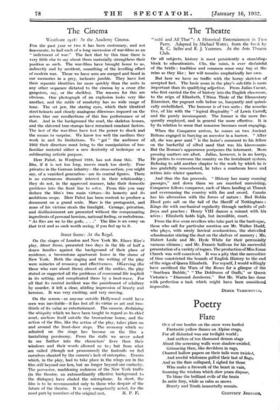Street Scene: At the Regal.
On the stages of London and New York Mr. Elmer Rice's play, Street Scene, presented two days in the life of half a dozen families against the background of their place of residence, a brownstone apartment house in the slums of New York. Both the staging and the writing of the play were miracles of economy and effectiveness. Observing (for those who care about them) almost all the unities, the play stated or suggested all the problems of communal life implicit in its setting, and complicated them by a heat-wave. For all that its central incident was the punishment of adultery by murder, it left a clear, abiding impression of beauty and heroism. It was very exciting, and very moving. On the screen—as anyone outside Hollywood could have seen was inevitable—it has lost all its virtue as art and two- thirds of its value as entertainment. The camera, disdaining the ubiquity which we have been taught to regard as its chief asset, anchors itself outside the brownstone house, and the action of the film, like the action of the play, takes place on and around the front-door steps. The economy which we admired on the stage has become on the film a tantalizing parsimony. From the stalls we never asked to see further into the characters' lives than their windows and their words allowed us to ; but from what are called (though not pronounced) the fauteuils we feel ourselves cheated by the camera's lack of enterprise. Events which, in the play, had to take place in the wings are in the film still beyond our ken, but no longer beyond our curiosity. The pervasive, maddening cadences of the New York traffic (in the theatre, an extraordinarily effective background to the dialogue) have eluded the microphone. In short, the film is to be recommended only to those who despair of the future of the theatre. It is very competently acted, for the


































 Previous page
Previous page